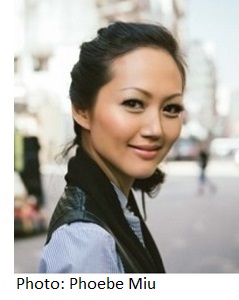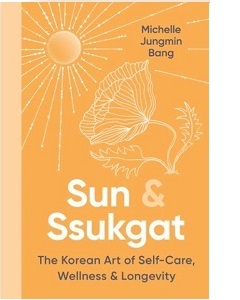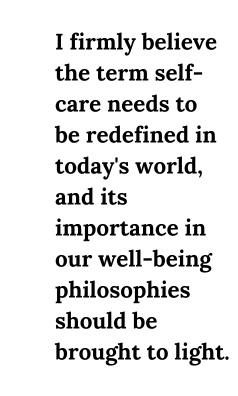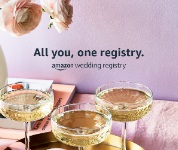
 Michelle Jungmin Bang's journey from
award-winning eco-entrepreneur to wellness advocate spans continents
and cultures, bridging innovation with tradition. When her fast-paced
life as a successful startup founder led to a health crisis, Bang found
herself drawn back to the wellness traditions of her heritage. She
spent years researching and documenting centuries-old well-being
practices across Asia. The result is her book Sun & Ssukgat: The
Korean Art of Self-Care, Wellness & Longevity, which weaves
together her personal healing journey with ancient wisdom for modern
lives. Bang talked to us about wellness practices from healing broths
to the connecting power of jeong, sharing how her path from exhaustion
to renewal might help others find their own way to wellness.
Michelle Jungmin Bang's journey from
award-winning eco-entrepreneur to wellness advocate spans continents
and cultures, bridging innovation with tradition. When her fast-paced
life as a successful startup founder led to a health crisis, Bang found
herself drawn back to the wellness traditions of her heritage. She
spent years researching and documenting centuries-old well-being
practices across Asia. The result is her book Sun & Ssukgat: The
Korean Art of Self-Care, Wellness & Longevity, which weaves
together her personal healing journey with ancient wisdom for modern
lives. Bang talked to us about wellness practices from healing broths
to the connecting power of jeong, sharing how her path from exhaustion
to renewal might help others find their own way to wellness.
Your story begins with a profound personal transformation. How did your
cultural heritage shape your perspective on healing and wellness as you
embarked on this journey?
My cultural heritage is a blend of East and West experiences, and this
was integral in shaping my research and writing about my healing
journey in my upcoming book, Sun & Ssukgat: The Korean Art of
Self-Care, Wellness & Longevity.
I am a Korean American born and raised in Brooklyn. I grew up in a
world of East-West medicine. My father is a US-based doctor trained at
a top medical school in Korea. He exposed me very early on to the
practical and holistic applications in medicine, which are deeply
embedded within Korean culture, for example, using whole foods and
holistic measures to recover from surgery, colds, pregnancies, and
injuries. Later, I married into a traditional Chinese family that
embodied these nourishing traditions passed down generationally. Over
the last two decades, my family and I have been splitting our time
between Hong Kong and New York City as expatriates.
When I embarked on this journey, I was in Hong Kong. I had just
launched a dream social impact startup that experienced tremendous
growth, winning awards and major contracts. I was deeply passionate
about what I was doing, working around the clock, too busy to sleep or
to eat. And in the middle of all that success, I landed in the
emergency room for the first time in my life. After the doctors put a
camera down my throat and into my stomach, they discovered there was
very little of my gut lining that remained healthy. When I returned
home from the hospital, I became ill constantly.
The emergency hospital visit led me down a path of trying to explore
and learn more, to find a better way to live. Through this, I began to
connect the dots with the cultural wisdom I had grown up with and to
formalize this knowledge with training and first-hand research. I began
uncovering the hidden health gems that were present all around me in
Asia, but were not initially apparent to me or in other parts of the
world.
In your research, you visited a secluded monastery where the nuns are
known for their philosophy about food and spirituality and their temple
cuisine? What was the most surprising or transformative lesson you
learned from them?
 One of the most surprising lessons I learned from the Buddhist nuns in
the mountains was how they self-care daily, particularly with the
hidden ingredients in their foods. In Korean culture, there is the
belief in yak sik dong won, a food-as-medicine philosophy - that when
we fall ill, we first try to take in nutritious foods to encourage the
body to repair and heal on its own before taking additional
interventions like surgery or a pill. The Buddhist nuns embrace
self-care, the practice of preventative care, with little steps that
they take daily to proactively protect their health and well-being. As
I watched them cook, I realized they kept going back to their naturally
derived condiments - vessels for persimmon vinegar, sesame and perilla
oil, sea salt, and traditionally fermented Korean jangs like soy sauce,
gochujang (red pepper paste) and doenjang (soybean paste). For me, this
was a lesson in understanding the foundations of my pantry and in what
I eat. Now, if I go to a restaurant or go to a grocery store, I will
think about the ingredients that went into making that dish and read
ingredient lists if I buy anything that comes in a package. If there is
anything I know that isn’t great for me - an unhealthy oil, an
unnecessary preservative, or food coloring - I will choose something
else. The Buddhist nuns taught me so much about mindful self-care.
One of the most surprising lessons I learned from the Buddhist nuns in
the mountains was how they self-care daily, particularly with the
hidden ingredients in their foods. In Korean culture, there is the
belief in yak sik dong won, a food-as-medicine philosophy - that when
we fall ill, we first try to take in nutritious foods to encourage the
body to repair and heal on its own before taking additional
interventions like surgery or a pill. The Buddhist nuns embrace
self-care, the practice of preventative care, with little steps that
they take daily to proactively protect their health and well-being. As
I watched them cook, I realized they kept going back to their naturally
derived condiments - vessels for persimmon vinegar, sesame and perilla
oil, sea salt, and traditionally fermented Korean jangs like soy sauce,
gochujang (red pepper paste) and doenjang (soybean paste). For me, this
was a lesson in understanding the foundations of my pantry and in what
I eat. Now, if I go to a restaurant or go to a grocery store, I will
think about the ingredients that went into making that dish and read
ingredient lists if I buy anything that comes in a package. If there is
anything I know that isn’t great for me - an unhealthy oil, an
unnecessary preservative, or food coloring - I will choose something
else. The Buddhist nuns taught me so much about mindful self-care.
On Jeju Island, you met the haenyeo, female free divers who harvest
seafood and seaweed, holding their breath for up to three minutes at a
time. How did they inspire your approach to breathwork and healing?
The haenyeo inspired me to mind my breath, one of the easiest hacks I
now employ many times daily. Before meeting them, I realized that I was
taking shallow breaths, that is, taking quick, short breaths, which
resulted in minimal oxygen intake and not doing much for my body. I
have learned to breathe deeply through my nose and then slowly exhale
through my mouth. Now, even if I’m standing in line or want to take a
break from work, I’ll take a moment to take a deep breath for the mere
seconds that this exercise requires, and I can feel my body much more
energized with the more effective oxygen intake, and with any
unintentional body tension releasing simultaneously.
The haenyeo also live in deep symbiosis with the environment. As they
forage for seaweed and seafood for a living, they are intimately
engaged with and aware of the challenges we face with the effects of
climate change and even trash that gets sent into the ocean. For them,
healing is working at one with nature; it is also about building a
strong community, one that they can lean on for well-being and
resilience, which forms the basis for the mental and physical strength
and stamina that is required to dive deep into the waters almost every
day, even through their 90s.
What insights did you gain from centenarians in Asia that you believe
are universally applicable to well-being?
My views of older age were wiped clean after researching centenarians
in Asia. I think we are often exposed through the media and other
narratives that older age equates to mental and physical decline. For
me, I had an internal marker of 50. But, after two decades of living in
Asia, I have witnessed first-hand how the elderly in Asian cultures
seem to disprove notions of what is achievable at an older age. Many of
the elderly that I regularly encounter stridently defy their old age
and show traits of those far younger, including astonishingly smooth
skin without wrinkles, flexible joints, thick hair, good vision,
physical strength, and lower rates of chronic illness. Before my
hospital episode, it never occurred to me to look into why this was so.
The greatest common denominator was that they spent most of their time
outside their homes, even into their one hundreds. When they are not
sleeping, they are moving and active all day, with their minds too. I
realized that these individuals hadn’t discovered some magical fountain
of youth: Their secret lies in simply embracing a different mentality
about older age that gives truth to the adage: “You are only as old as
you think you are.”
The concept of jeong is deeply rooted in Korean culture. How can people
unfamiliar with it incorporate this philosophy into their daily lives?
In Korean culture, the idea of jeong is ever-present. If you were to
find the meaning of jeong in English, you would have to combine many
words at once - love, friendship, empathy, compassion, sincerity,
loyalty, sacrifice, community, connection, vulnerability, affection,
sympathy, warmth, passion, kindness, social responsibility, and
generosity of spirit toward humankind. jeong is a collective call in
Korean culture to help one another, the invisible bind that ties them
through deep connections, even amongst strangers.
People unfamiliar with jeong can incorporate this philosophy by making
time to demonstrate a little more kindness to others. In Korean
culture, jeong can manifest in what might seem the smallest possible
ways- calling a friend, sharing a snack with the homeless, or giving up
your seat to someone else on a subway. There have been many studies on
longevity demonstrating that strength in relationships - the idea
behind jeong - is the most important factor to a healthy lifespan and
which rivals changing other lifestyle factors, like smoking or physical
inactivity, to promote health.
What role does nature play in the healing practices you discovered, and
how can urban dwellers reconnect with it?
I have learned that being in nature is healing. Being outside, taking
in fresh air, even dirt, and being in touch with how nature is
unfolding through the seasons, are healing. In Seoul, I found that
urban planning facilitated healthy living for its citizens, allowing
them easy access to the outdoors, even within a major urban center.
But, urban dwellers anywhere in the world can experience nature in the
outdoors just by walking, or biking, along tree-lined streets or near
open water. Nature can also be experienced by shopping at green
markets, and supermarkets, where you can see nature’s colorful bounty
cropping up each season.
Can you walk us through the significance of some of the recipes in your
book, such as your grandmother’s myeolchi broth or the samgyetang?
My grandmother’s myeolchi, or anchovy broth, and samgyetang, or poached
whole chicken soup, which my father likes to make, are examples of
foods we use for recovery in our Korean heritage. These recipes employ
specific ingredients recorded for centuries in our history as medicine,
as healing foods for ailments, and to keep the body strong. The
myeolchi, for example, uses kombu, which is high in iodine, which is
essential for thyroid functioning, iron, and calcium, as well as
vitamins A and C. Samgyetang, another example, uses many of the common
anti-inflammatory ingredients in Korean culture - ginseng, ginger, and
jujubes - to help boost the immune system.
Do you have a favorite healing recipe from your book that is
particularly meaningful to you? Why?
One of my favorite healing recipes is a mushroom broth. Before I left
the nuns on one of my visits, I asked them what happens when people get
sick in the monastery and whether they had any cold or flu remedies to
share. They explained that they believe in allowing the body to heal
itself first with easy-to-digest foods while they are sick, like juk,
as my parents had done, and they drink a healing mushroom broth to help
support the recovery period. This healing mushroom broth is something I
make all the time now as a main course for lunch or as a side. It not
only has a delicious umami flavor, but it also uses healing mushrooms,
which have had a long history in Asian cuisine and medicine. The nuns
like to use the more exotic mushrooms they forage in the surrounding
forests, such as black trumpet, but cooking with varieties like
shiitake are also great for staying healthy during cold and flu season.
I like to add chilies and lemons for flavor and an extra nutritional
and antioxidant boost.
What was the biggest challenge in distilling centuries-old wellness
traditions into a format accessible to modern readers?
The biggest challenge was finding some of the ingredients that I
discovered deep in Asia while I was in NYC or elsewhere. I discovered
solutions to this conundrum in many ways. For example, if I wanted to
retain a certain ingredient not found in my local grocery store, like
jujubes, I would find them in dried form, which is quite convenient
because the dried versions last longer and are easy to implement into a
dish once you reconstitute them with a bit of water or place them into
a soup or tea. A second example is when I realized I could go back to
the health principles of what I was learning. Take for instance the
traditional Korean breakfast which is made up of banchan, little Korean
side dishes. I realized I could modify this idea by put everything in
one plate or bowl and then, take the health concept back to the
nutrients being represented, which was a construction of complex
carbohydrates, protein and plant nutrients, all of which were savory,
versus sweet. These were some of the ways that I was able to make
centuries-old wellness traditions into a format more accessible to
modern readers but also for myself, someone living in both East and
West worlds within a modern lifestyle. 
How do you envision the philosophy of your book influencing the next
generation of wellness practices?
I wrote Sun & Ssukgat to preserve wisdom that I witnessed fading in
the modern world but also to shift our wellness practices from sick
care to preventative care. I firmly believe the term self-care needs to
be redefined in today's world, and its importance in our well-being
philosophies should be brought to light. For centuries in Asia, the
well-being philosophy has been to stop sick symptoms before they become
chronic and perhaps irreversible. Natural, effective, and even
environmentally conscious, these home- spun solutions quietly and
radically shift conventional wisdom. Rather than waiting to treat
symptoms, we can try to prevent them from occurring in the first place
by establishing simple practices from Asia's well traditions.
Through Sun & Ssukgat, I hope to share the mission that embracing
new science while preserving the old ways of living - eating local,
eating in season, eating real food, reconnecting to nature - could
solve many pressing issues our modern world faces today - chronic
disease, climate change, and food waste. The World Health Organization
estimates that a staggering 70% of global deaths stems from conditions
that are preventable. Meanwhile, while we have an estimated 300,000
edible plants in the world, our planet grows dry from overproducing a
very small rotation of the same food ingredients, of which roughly 33%
is wasted (50% of this happens in our own homes). I firmly believe
there the health of our planet and that of humans is interconnected and
we can work to achieve a better result in both at the same time by
preserving centuries-old well traditions as we move forward with new
discoveries.
What is a typical day like for you?
I have a habit of waking up early to make time for myself before
anyone else in the household wakes up. I have a glass of water by my
night table; then I pair this with warm water from the kitchen, and I
like to place a bit of sea salt, fresh ginger, and lemon into it. I
know now that what I put into an empty stomach is critical for helping
me energize for the day and control cravings, weight, and gut health. I
have switched from waking up to my old favorite breakfast of sweetened
coffee and almond croissant to espresso without sugar and savory
breakfast, which, if I am busy, includes dinner leftovers replete with
protein, probiotic-rich sauerkraut or kimchi, and/or vegetables. Then I
go for half an hour to do a bit of sweaty hot yoga with weights. The
body has its internal medicines to help heal you. You can release these
simply by sweating and moving every day. The only other thing I do for
movement is to make sure I get steps in. Incorporating walking - and
walking outdoors - has been life-changing for me. I’ve never felt
better.
Most days, if I start my morning right, the rest of the day follows
well. I am intellectually curious, and I like to work with a number of
mission-driven organizations and projects, along with parenting two
uniquely gifted children. I also want to make time for friends! What I
do in the morning and the many self-care steps I have learned to take -
for example, taking short breathing breaks or a stretch - enables me to
do it all. I also know now that I have so much more time than I thought
I had initially if I self-care daily.
Who or what do you look to for inspiration?
I look to my parents for inspiration. I didn't realize until I wrote
Sun & Ssukgat how my parents instilled jeong in me, showing me
through their deep involvement in the Korean community. Outside of
their chosen professions, they led organizations and causes to
encourage more Asian representation in media or help fellow immigrants
professionalize. I want to follow in their footsteps; I want to help
drive positive change through the social impact initiatives I launch,
to try to embody the change I wish to see in the world.
_______________________________
*Edited for length and clarity.
Photo credit: Phoebe Miu. Images provided by HarperCollins
What
a US Exit From the WHO Means for Global Health
by Amy Maxmen
Jade Pieces: K-Dramas to Watch and Rewatch
Picture This: The Health Benefits of 5 Traditional Asian Ingredients
Our
Top Three Must-See Videos
by AP Crone
How to Report Hate Crimes Against AAPIs
Who, What, Where and How: AAPI Organizations

